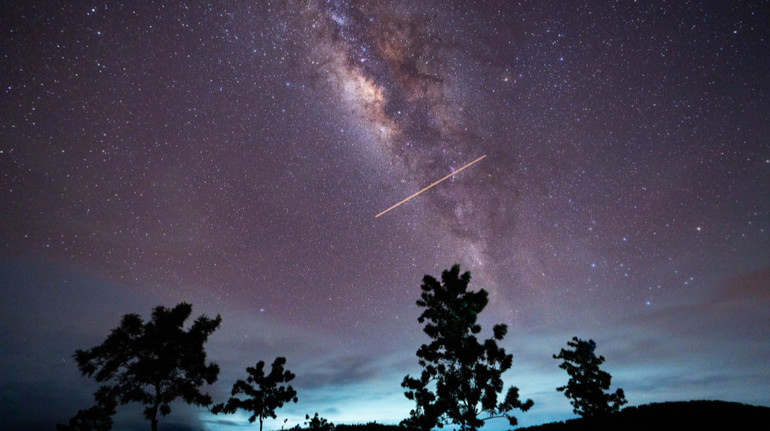What will the sky in May surprise: Calendar of Space Events

The meteoric stream of the stage-aquarid in May 2024
Photo: Thilina Kalthotage/Nurphoto/Getty Images
In May 2025, the sky will delight the attentive observers of the peak of the annual meteor stream of the stage-aquarid. In addition, the bright planets of the solar system will « walk » in the next few weeks.
This month also accounts for the visible « explosion » of the stars for three thousand light years from Earth, which takes place every 80 years.
In NASA toldwhat to look for this May.
All the month is bright planets
Throughout the month before the sunrise, you can see the bright Venus low in the sky.
The red giant Mars will appear in the first few hours after sunset. This planet will disappear from the visible field of view from about midnight to 1 o’clock in the morning local time.
In the western part of the sky, after the daylight, Jupiter will shine brightly. At the beginning of the month, it will appear in the sky about two hours after sunset, but closer to the end of May – an hour after sunset.
Saturn this month will start his movement next to Venus low in the eastern part of the sky before sunrise. However, over time, it will quickly separate from its « companion » and rise higher in the sky.
The first quarter of May Mars can be seen next to the moon. Within a few days at the end of the month, attentive observers will be able to see the satellite of the Earth passing past Saturn and Venus, becoming an increasing « sickle ».
It is estimated that on May 23, the month will « hang » between Venus and Saturn.
All the month-the meteoric stream of the stage-akvarid
In early May will continue the annual stream of stage aquarid, whose meteors come from the comet of Galery. The earth passes through this swirl of stones every year in May and October.
Unlike some other annual streams, the stage-aquarid was officially opened relatively late-at the end of the XIX century, writes Space. The phenomenon arises due to the fact that about every three -quarters of a century of Galley’s comet approaches the sun and leaves behind many debris.
For centuries, the comet has carried out countless revolutions around the central dawn of the solar system, leaving behind the fragments that have existed for almost five billion years.
Scientists believe that Galelli meteors have existed since the birth of the solar system. The core of the comet’s core flashes about 100 kilometers above our heads. This cosmic stones are swollen through the Earth’s atmosphere at a speed of 66 kilometers per second, creating a falling star effect.
Stat-aquarid meteors move rapidly, and many of them form stable dust loops, which are delayed for a few seconds after a visible strip of flight of stones.
Scientists consider this flow one of the best for observations in the Northern Hemisphere.
May 6 is the peak of the annual meteor flow
The peak of the flow of stones from the comet is expected to fall on May 6. Although the opportunity to see a few « falling stars » will appear two to three nights earlier.
On a peak night, the moon goes around at 3 am, providing a perfectly dark sky for observation.
At the peak of the meteor flow in the sky every hour can be seen from 10 to 20 space stones flying past.
To see the « crumbs » of the comet of Gallei, it is best to look in the pre -world eastern sky.
Expected « explosion » dawn
Over the three thousand light years from the ground is a double star system called T Coronae Borealis. It includes a red giant and a white dwarf – stars at the late evolution, which differ in light and size.
Scientists have estimated that the event will take place in the coming months, which happens about once every 80 years. Now the external atmosphere of the red giant is expanded, and its « neighbor » is close enough to capture part of the hydrogen of the greater dawn of the system.
With some regularity, the white dwarf accumulates the hydrogen of the red giant, which leads to a thermonuclear explosion, which is called the new one.
It is difficult to predict star outbreaks, but astronomers suggest that a visible explosion can happen the next few months. All because the white dwarf is suddenly dim. Similar changes were observed before the new in 1946.
When the explosion happens, the star will stay bright in the sky for a long time, its peak will last for several days.
It will be possible to see the effects of a thermonuclear explosion in space.
Earlier we told About the high school student from the United States, who, with the help of artificial intelligence, discovered 1.5 million earlier unknown spaces of space.







